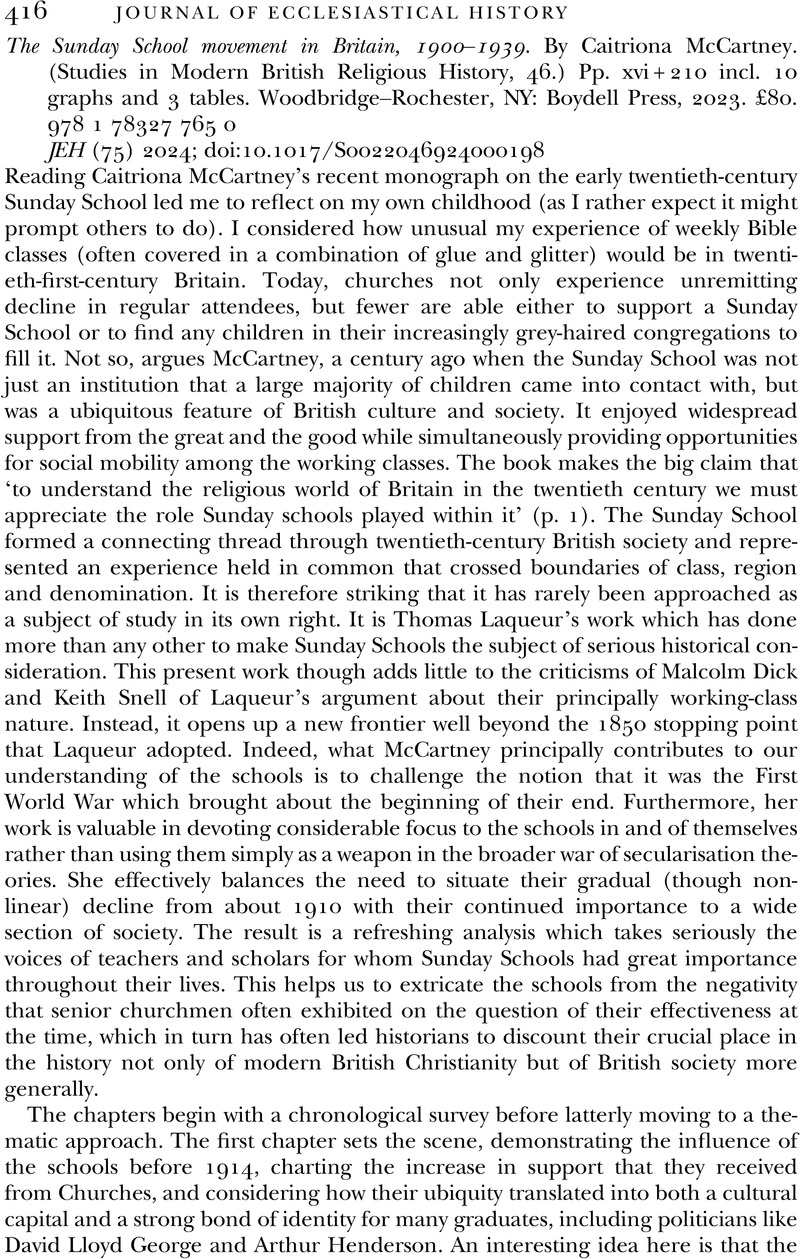No CrossRef data available.
Article contents
The Sunday School movement in Britain, 1900–1939. By Caitriona McCartney. (Studies in Modern British Religious History, 46.) Pp. xvi + 210 incl. 10 graphs and 3 tables. Woodbridge–Rochester, NY: Boydell Press, 2023. £80. 978 1 78327 765 0
Review products
The Sunday School movement in Britain, 1900–1939. By Caitriona McCartney. (Studies in Modern British Religious History, 46.) Pp. xvi + 210 incl. 10 graphs and 3 tables. Woodbridge–Rochester, NY: Boydell Press, 2023. £80. 978 1 78327 765 0
Published online by Cambridge University Press: 04 April 2024
Abstract
An abstract is not available for this content so a preview has been provided. Please use the Get access link above for information on how to access this content.

- Type
- Reviews
- Information
- Copyright
- Copyright © Cambridge University Press 2024



